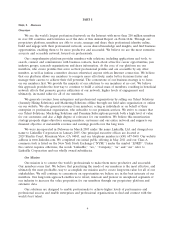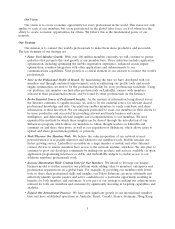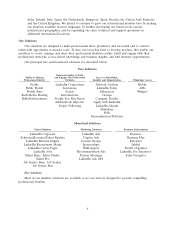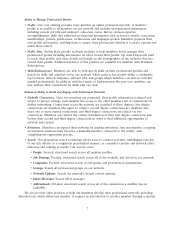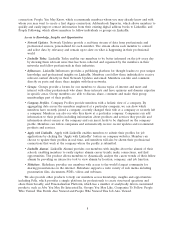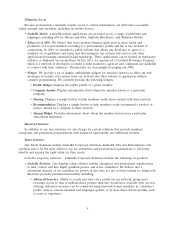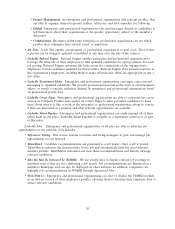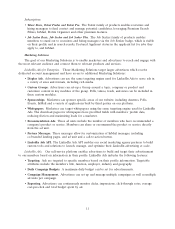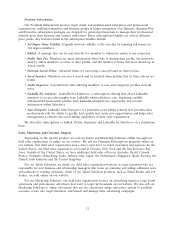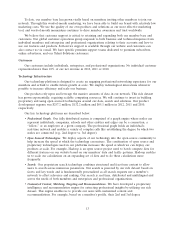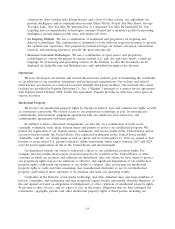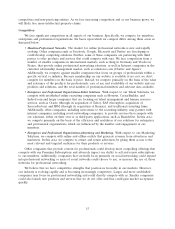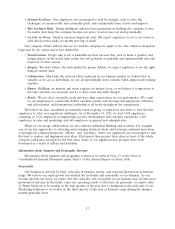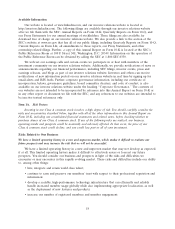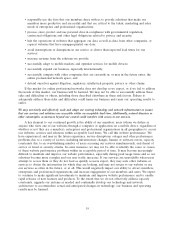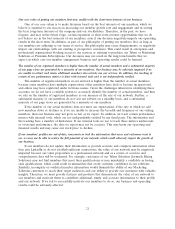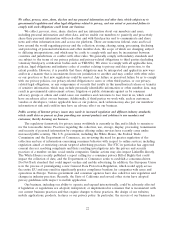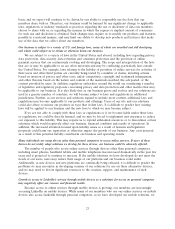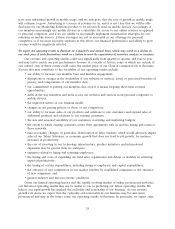LinkedIn 2012 Annual Report Download - page 16
Download and view the complete annual report
Please find page 16 of the 2012 LinkedIn annual report below. You can navigate through the pages in the report by either clicking on the pages listed below, or by using the keyword search tool below to find specific information within the annual report.connections, their viewing and clicking history, and a host of other criteria, our algorithms can
provide intelligence and recommendations around Talent Match, People You May Know, Groups
You May Like, Jobs You May Be Interested In or Companies You May Be Interested In. Our
targeting and recommendation technologies continue beyond just a member’s profile by providing
intelligence around similar profile views and similar job views.
•Ad Targeting Platform. We use a combination of traditional and proprietary ad targeting and
delivery technologies. The combination is optimized to work with our respective partners to provide
the optimal user experience. Our proprietary systems leverage our feature extraction, information
retrieval, and matching systems to provide the most relevant ads.
•Document Conversion Technologies. We use a combination of open source and proprietary
technologies to convert documents in various formats (e.g., pdf, doc, ppt) into html5, a mark up
language for structuring and presenting content on the Internet, so that the document can be
displayed on LinkedIn.com and Slideshare.net, and embedded throughout the Internet.
Operations
We have developed our website and related infrastructure with the goal of maximizing the availability
of our platform to our members, enterprises and professional organizations. Our website and related
infrastructure are hosted on a network located in multiple third-party facilities. Our material data center
facilities are provided by Equinix Operating Co., Inc. (‘‘Equinix’’) pursuant to a master service agreement
with Equinix dated February 2008. Under this agreement, Equinix provides us with data center space in
various locations.
Intellectual Property
We protect our intellectual property rights by relying on federal, state and common law rights, as well
as contractual restrictions. We control access to our proprietary technology, in part, by entering into
confidentiality and invention assignment agreements with our employees and contractors, and
confidentiality agreements with third parties.
In addition to these contractual arrangements, we also rely on a combination of trade secret,
copyright, trademark, trade dress, domain name and patents to protect our intellectual property. We
pursue the registration of our domain names, trademarks, and service marks in the United States and in
certain locations outside the United States. Our registered trademarks in the United States include
‘‘LinkedIn’’ and the ‘‘in’’ design mark, as well as others, and as of December 31, 2012, we owned or had
licenses to seven issued U.S. patents related to online networking, which expire between 2017 and 2029,
and 124 patent applications on file in the United States and internationally.
Circumstances outside our control could pose a threat to our intellectual property rights. For
example, effective intellectual property protection may not be available in the United States or other
countries in which our products and solutions are distributed. Also, the efforts we have taken to protect
our proprietary rights may not be sufficient or effective. Any significant impairment of our intellectual
property rights could harm our business or our ability to compete. Also, protecting our intellectual
property rights is costly and time-consuming. Any unauthorized disclosure or use of our intellectual
property could make it more expensive to do business and harm our operating results.
Companies in the Internet, social media technology and other industries may own large numbers of
patents, copyrights, and trademarks and may frequently request license agreements, threaten litigation, or
file suit against us based on allegations of infringement or other violations of intellectual property rights.
From time to time, we face, and we expect to face in the future, allegations that we have infringed the
trademarks, copyrights, patents and other intellectual property rights of third parties, including our
14


